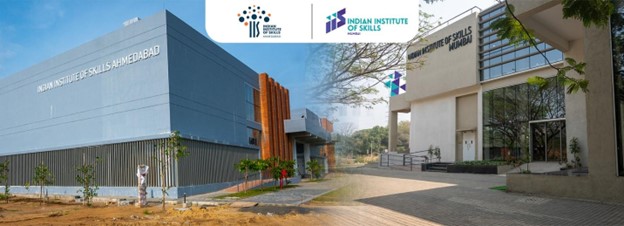

“I will call PM Modi instead of Trump.”
This recent remark by Brazilian President Lula da Silva reflects a global reality – India’s growing influence on the world stage and its deepening relationship with Latin America’s largest economy.
With Brazil leading South America’s industrial and economic charge, the two nations are aligning across key sectors such as pharmaceuticals, agro-tech, manufacturing, and skill development. As India’s influence expands, these partnerships are shaping a new global balance rooted in collaboration and shared growth.

India’s engagement with South America has grown steadily over the past decade. Total trade rose from $28.1 billion in 2011–12 to $36.7 billion in 2021–22, with continued growth since then. The region also benefits from India’s development initiatives – 38% of India’s UN Development Partnership Fund in 2021 was allocated to South American nations, signalling their strategic importance.
The combined effects of the COVID-19 pandemic and the Ukraine conflict have prompted South American nations to diversify trade and technology partnerships. India has emerged as a trusted economic ally, offering industrial capability, pharmaceutical innovation, and technology expertise.
The relationship is symbiotic: South America supplies critical minerals, hydrocarbons, and agricultural products, while India contributes advanced manufacturing, IT, and pharmaceutical solutions — creating a resilient and complementary trade ecosystem.
India’s pharmaceutical industry, home to companies like Cipla, Sun Pharma, and Dr. Reddy’s, is a major global supplier of affordable, high-quality medicines. These firms are already expanding their footprint across South America, providing both finished drugs and Active Pharmaceutical Ingredients (APIs) that strengthen local healthcare systems.

Affordable healthcare remains a priority for South American nations. Through joint ventures and R&D collaborations, Indian and South American firms are improving access to essential drugs and expanding capacity for vaccine and API manufacturing, a partnership that proved crucial during and after the pandemic.
India’s manufacturing sector is entering a new phase of global integration, and South America is central to that plan. The focus is on critical minerals, renewable energy, EV technologies, and industrial innovation, with several agreements already underway.
Peru: India and Peru are negotiating a Free Trade Agreement (FTA) to secure a steady supply of rare earth elements vital for EV and electronics production, including neodymium, praseodymium, dysprosium, and terbium. The FTA is expected to conclude by late 2025 or early 2026, covering mining, pharmaceuticals, and IT.

Chile: An expanded India–Chile FTA aims to improve access to lithium and copper, essential for EV batteries and renewable technologies, while easing tariff barriers and promoting smoother trade.
MERCOSUR: India’s Preferential Trade Agreement with MERCOSUR (Brazil, Argentina, Uruguay, Paraguay), effective since 2009, is being expanded to include manufacturing and industrial goods. President Lula da Silva has expressed his intent to triple trade with India, emphasising aircraft manufacturing and advanced industry collaboration.

Peru: Seven negotiation rounds for an India–Peru FTA have been completed, with the eighth round due in late 2025. Focus sectors include pharmaceuticals, IT, and manufacturing.
India and Chile are also exploring the integration of digital services within manufacturing, aiming to enhance productivity, automation, and innovation in both countries’ industrial ecosystems.
As trade expands, skilled labour will define how effectively both regions harness these opportunities. The Tata Indian Institute of Skills (Tata IIS) is playing a pivotal role in preparing India’s workforce for specialised roles emerging from these global partnerships.
By developing a globally competent talent pool, Tata IIS ensures that both Indian and South American industries can meet the rising demand for skilled professionals in energy, manufacturing, and technology sectors.
The India–South America relationship is evolving into a strategic alliance of resources, technology, and talent. With India’s strength in pharmaceuticals, manufacturing, and skill development, and South America’s vast natural resources and industrial potential, both regions are poised for long-term mutual growth.

As new trade agreements and technology collaborations unfold, the Tata Indian Institute of Skills stands ready to power this transformation, shaping a workforce that drives innovation, productivity, and sustainable progress.
Together, India and South America are crafting a partnership that extends beyond economics — one built on shared ambition, industrial collaboration, and the belief that the future of global growth lies in cooperation, not competition.
Tata IIS offers a short, comprehensive course in CNC operations with several key benefits, like industry-linked training, and witness practical experience through real-world industrial visits. Learning from industry experts who share valuable insights. Dedicated assistance in securing job opportunities after completion of the course. Work on live projects that simulate real manufacturing scenarios, enhancing your skills and confidence.
Upon completing CNC operator training, you can pursue a wide range of job roles such as:
Becoming a CNC operator typically requires hands-on training. Enrolling in a specialised CNC training program is a good place to start. For example, the Tata IIS CNC course offers comprehensive training that includes industrial visits, expert guest lectures, and placement support to ensure you’re ready for the workforce
One needs to apply to the website of the chosen location – IIS Mumbai, IIS Ahmedabad – after which there will be an entrance test. If you succeed, your admission will be confirmed by paying the minimal admission fees.
One needs to apply to the choice of location’s website – IIS Mumbai, IIS Ahmedabad, after which there will be an entrance test. If you succeed, your admission will be confirmed by paying the minimal admission fees.
© 2024 Indian Institute of Skills Mumbai | All rights reserved

Inspired by the tree of knowledge, this logo implies a tree with interspersing dots representing various skills that the institute offers, making it a wholesome skilful tree. The tree’s bark represents individuals with different mindsets coming together with a common purpose of growth. Lastly, one can subtly see the acronym IIS which also represents students as figurines.

To date, we have trained around 650 students. Our alumni are working with notable companies, such as Torrent Power, Powellite Electricals, Tata Motors, Bajaj Auto, and L&T. . Equipped with holistic technical and business skills, many alumni have also chosen the path of entrepreneurship to realise their dreams.
We firmly believe in inclusion. Identifying segments that need us the most is one of our goals. We are mindful of reaching the tribals and marginalised and ensuring maximum women participation.

Learning from the industry is at our core. Our industry partners are deeply involved, right from course design and delivery to recruitment. Our current partners include Fronius, Universal Robots, SMC, Phillips Machine Tools, Multivista, Fanuc, MIR, Markforged, Schneider Electric, Lincoln Welders, Hexagon, Formlabs, ABB, Festo, Ather, Tata Motors, Thermax, Larsen & Toubro, Bajaj Auto Ltd., Carraro, Marriott, Indian Accent, Taj, Lollo Rosso, Tomato’s, Ramada by Wyndham, Novotel, La Milano Pizzeria, Renaissance Hotels, The Fern, Tatr, IFEA, The Job Plus, Happy Faces, Sewa.

The campus is situated on a 4.17-acre land parcel at Chunabhatti inside the National Skill Training Institute campus in the state of Maharashtra. The first phase of development comprises a 22,500-square-foot facility housing advanced manufacturing and electric vehicle laboratories. The facility also includes classrooms and advanced computer laboratories for training in allied areas, providing trainees with a real-world environment akin to working in the manufacturing industry. It is equipped to train approximately 190 students at a time.
Spanning over 2.5 lakh square feet, the campus features infrastructure that includes training facilities, hostels, and dedicated spaces for student activities, supporting comprehensive learning and growth.